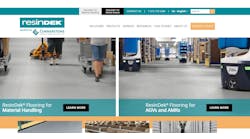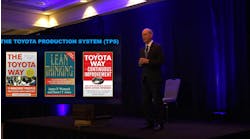Solve Labor Issues Via Non-Traditional Sources, Video Training
American manufacturers have about 350,000 current job openings and are facing a looming shortage of 2.4 million workers by 2028, and the silver tsunami of retiring Baby Boomers is impacting manufacturing as much as any other industry. So now is the perfect time for them to make the changes necessary to attract a younger and more diverse, high-tech based workforce.
In many cases, this means making some drastic changes to both culture and work environment. For example, women make up about 47% of the total workforce but only about 30% of the people employed in manufacturing industries, a ratio that is similar to what it was about 20 years ago. Clearly the industry has to make the industry more attractive to women. Two areas to address are: women still make only 72% of the median male salary in the industry and hold only 25% of the leadership positions.
While the workforce dynamic is complex, manufacturers can begin with a more simple approach for solving their labor issues with these three foundational areas:
- What are people looking for in their work?
- Where can we find qualified workers?
- How do we recruit, onboard, train and retain them?
What People Are Looking For: Employee-Centric Companies
Employee-centric companies deliver on the premise that their people are their most important assets. There are many ways to make your company more attractive to current and prospective employees. Here are a few possibilities:
- Provide clear career pathways and training opportunities. Younger employees also want the opportunity to share ideas and goals and receive regular feedback.
- Show off your technology. People want to do cool work. SpaceX has placed an emphasis on showing the world their innovative processes. If you use Augmented Reality/Virtual Reality in your operation, highlight their use in a welcome video; many young people want to work with technology.
- Point out how your company makes the world a better place. People want to work for a company with a strong sense of purpose.
- Offer perks that work for you and the employees. Such as:
- Free breakfast and coffee. Many employees will come to work early and become engaged. But don’t go cheap on the coffee.
- Provide a cell phone. As operations become more digitized, mobile devices are a needed tool. This perk also provides stickiness for retention as leaving a job would require an investment in a new phone and plan.
Where to Find Prospects: Target Non-Traditional Talent Pools
Census data shows that those who work in manufacturing earn over 21% more than the median income. A manufacturer has a lot of good jobs to showcase – from data and software to automation and advanced technology. The enterprise requires skills ranging from design and marketing to administration, finance, sales, and cybersecurity.
The talent pools for these jobs are vast if you are willing to look beyond the traditional boundaries for manufacturers. Consider these non-traditional talent pools:
- Non-manufacturing employees: Many workers left the restaurant, retail and healthcare industries during the pandemic. They may like what you have to offer.
- English as a Second Language (ESL): If you rule out prospects who are not fluent in English you may be missing out. Also, translation services are available to help train employees, especially with video.
- Veterans: Former military members bring wide skill sets, discipline and the ability to communicate within an organization.
- Women: This is an opportunity to bring new ideas, different perspectives and talent, which boosts problem-solving and leadership capabilities.
- Variable shifts: Some manufacturers have succeeded with 9 a.m.-2 p.m. shifts, which allow part-time work within the traditional school hours and child-care windows. Figure out how to make flexibility a benefit for your operation.
- Physically challenged: As mentioned above, many manufacturing jobs are no longer based on physical strength or endurance.
- Youth: This is a chance to add significant technology-oriented skills.
Just as you target specific personas for your business, target specific talent pools for your workforce.
How to Recruit, Onboard, Train and Retain Workers: Use Video
Video is a powerful medium that is underutilized by the manufacturing industry. It can be used for training and best-practices. Just showing how something is made can be very cool. Think of how often you have heard someone say, “I never knew what your company did.” If people don’t know what you do, they have no way of knowing whether they would want to work for you. Or worse, they fill that information void with stereotypical assumptions that you do something industrial, dirty and dangerous.
Video also does not have to be expensive. A professionally produced “welcome video” can be done for $5,000 to $10,000, as can many training and safety videos. These videos provide long lasting value.
The benefits of video in your recruiting, hiring and training processes include:
- Institutional knowledge permanently captured
- Affordable and immediate ROI
- Ability to update processes quickly and regularly
- Added employee engagement
- Safety on the shop floor. As we hire employees without manufacturing backgrounds, safety protocols are critical to preventing injury and proper ergonomics.
Let’s look at three video options that manufacturers should consider.
Option I: Welcome Video
A professionally produced three-minute “welcome video” is the low-hanging fruit that can reside on your website and be used with every job listing and linked with social media posts. It can provide:
- A positive first impression of your company
- A consistent onboarding process and message
- A basic recruitment tool: Show off why people want to work for you. Accentuate the cool things that would be attractive to young or transitioning workers
- An opportunity through translation services to reach non-traditional prospects
Option II: Video for Virtual Training
Visual learning is a powerful tool for how to operate a machine or complete a process, especially in comparison to legacy written instructions. There also are benefits to animating videos, for applications such as:
- Showing how complex machinery works
- Demonstrating safety processes
- Building interactive quizzes to test training
- Testing competency, which can be used monthly, weekly, or even daily. This is especially effective for improving cross-training of new skills
Also, don’t underestimate the benefits of translation services as videos can be produced in one language and easily duplicated in others.
Option III: Virtual Reality
Virtual Reality will continue to play an increasingly important role for many types of training, and it has incredible uses for manufacturing. VR allows for the mastery of difficult tasks without putting the quality of work at risk but also creates emergency scenarios in a risk-free virtual environment for the employee. VR will improve:
- Expensive equipment training
- Dangerous environments
- Zero tolerance processes
VR will boost employee performance, reduce costly errors, and manage risk – all while attracting younger employees.
Become a More Employee-Centric Company to Solve Workforce Issues
Your local MEP Center is a trusted advisor for manufacturers preparing for the future of their company. The MEP National Network is here to help you become an employee-centric organization and solve your workforce challenges. Contact your local MEP Center to get the conversation started.
About the author
Jamey Quelle is Area Business Manager for Missouri Enterprise, which is part of the MEP National Network. He provides consultation services to manufacturing companies to facilitate strategic and operational growth through new technologies, automation, training, and process improvements.




